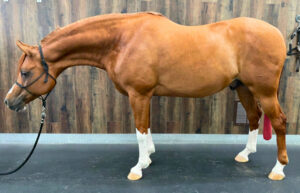Case Study
Underwater Treadmill Therapy for a Left Central Tarsal Fracture (LH Hock)
Blue, a 7-year-old Arabian gelding competing in Western Pleasure, was diagnosed with a left central tarsal fracture in the LH hock. His owner and veterinary team opted to include underwater treadmill therapy as part of his structured rehabilitation program to ensure a controlled return to movement without compromising the healing joint.
Horse: Blue
Breed: Arabian Gelding
Age: 7 Years Old
Discipline: Western Pleasure
The Challange:
Background
Blue, a 7-year-old Arabian gelding competing in Western Pleasure, was diagnosed with a left central tarsal fracture in the LH hock. His owner and veterinary team opted to include underwater treadmill therapy as part of his structured rehabilitation program to ensure a controlled return to movement without compromising the healing joint.
AquaPacer Rehab Program
Treadmill Type: Hudson AquaPacer
Water Temperature: Hot Water
Water Level: Above the hock
Jet Use: Not specified
Speed: 1.7 – 1.9 mph
Water Fill: Pre-filled before each walk
Ramp-Up Period: 7 days to acclimate
Session Progression: Day 1: 2 minutes – Session 25: 20 minutes
Duration: 25 sessions over 2 months
The Solution:
Result
By the end of the 2-month AquaPacer program, Blue had significantly improved range of motion, reduced inflammation in the affected joint, and demonstrated confident, weight-bearing movement. His stride returned to near-normal length and symmetry, allowing for a smoother transition into pasture turnout and, eventually, light under-saddle work.
The Result:
Why It Worked
The AquaPacer’s combination of buoyancy, controlled resistance, and consistent thermal therapy provided the ideal conditions for healing a complex joint injury like a tarsal fracture.
- Buoyancy offloaded weight from the injured hock, allowing Blue to begin movement earlier without overloading the joint.
- Warm water improved blood flow, supporting tissue repair and reducing joint stiffness.
- Gradual progression of intensity helped rebuild strength safely, while maintaining proper limb alignment and stride mechanics.
- Controlled environment reduced compensatory movement patterns that can occur with uneven ground or early turnout.

